Photographs of the Alsterschwimmhalle in construction reveal that its astonishing roof was completed before any other works started. A picture dated 1970 shows this act of daring: a double hyperbolic paraboloid structure; two wings with a combined span of 315 feet, just 3.5 inches thick, perched on land in the center of Hamburg, surrounded by jerry-built terraces of post-war housing, long-since replaced. The roof, held up by three muscular, diagonal struts, two of which are held together below ground by cables, stands alone, covering 49,000 square feet of dirt. The monumental aquatic center’s ticket offices and changing rooms, even the actual swimming pool, were added later. This was building as sculpture: the arms of a swimmer mid-butterfly stroke. Or a metaphor for a city, pounded by bombing, learning to fly again.
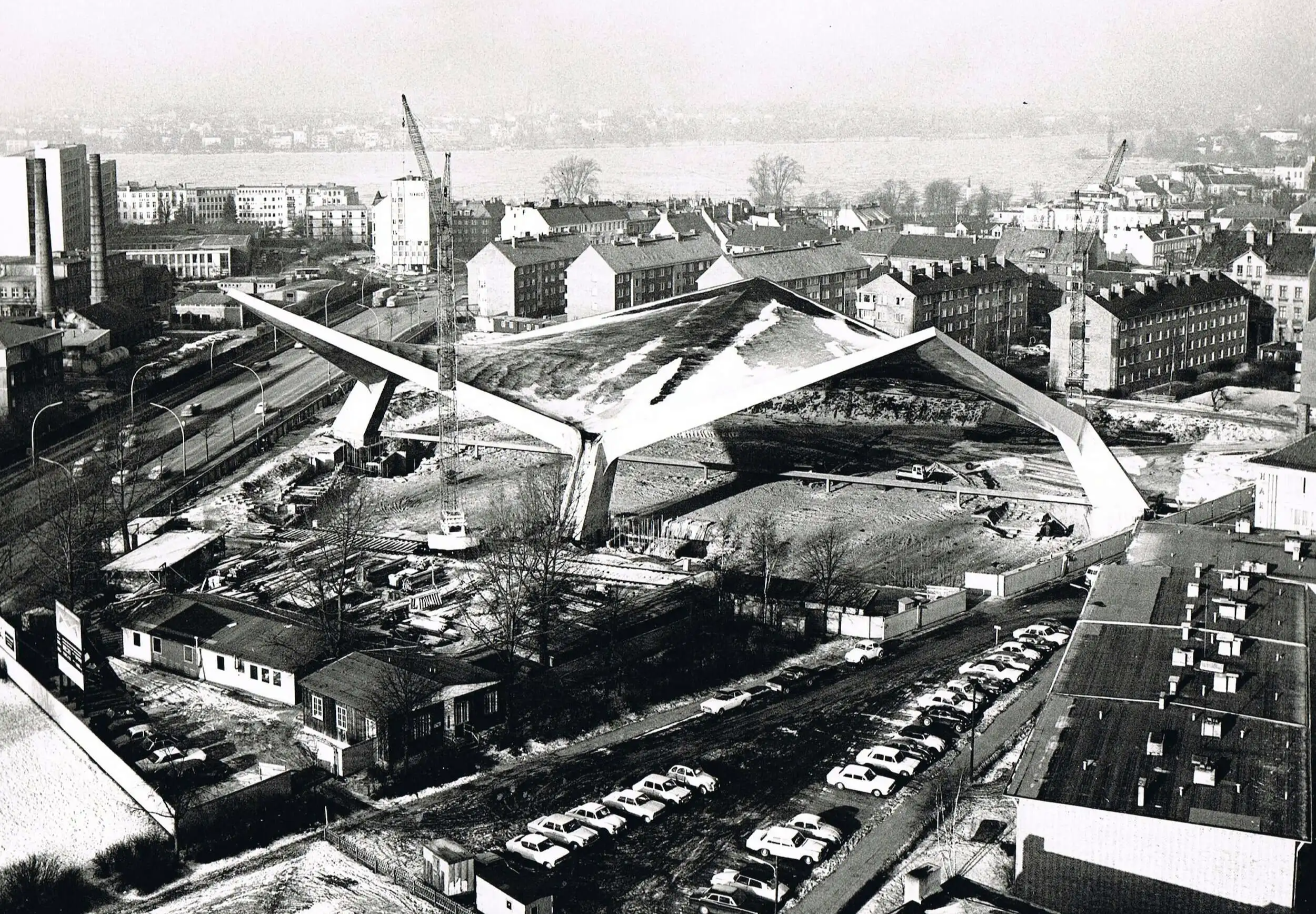 1
1
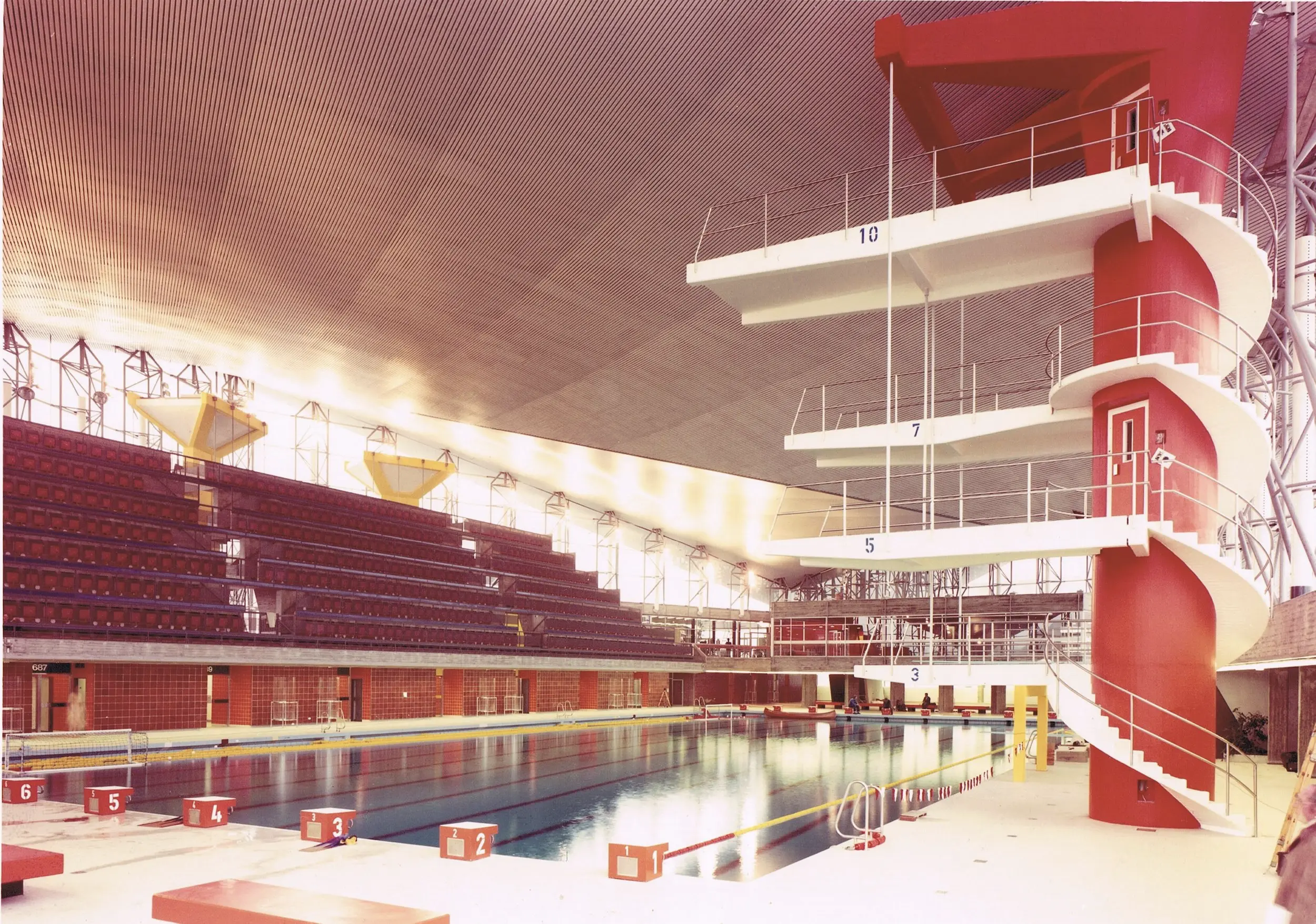 2
2
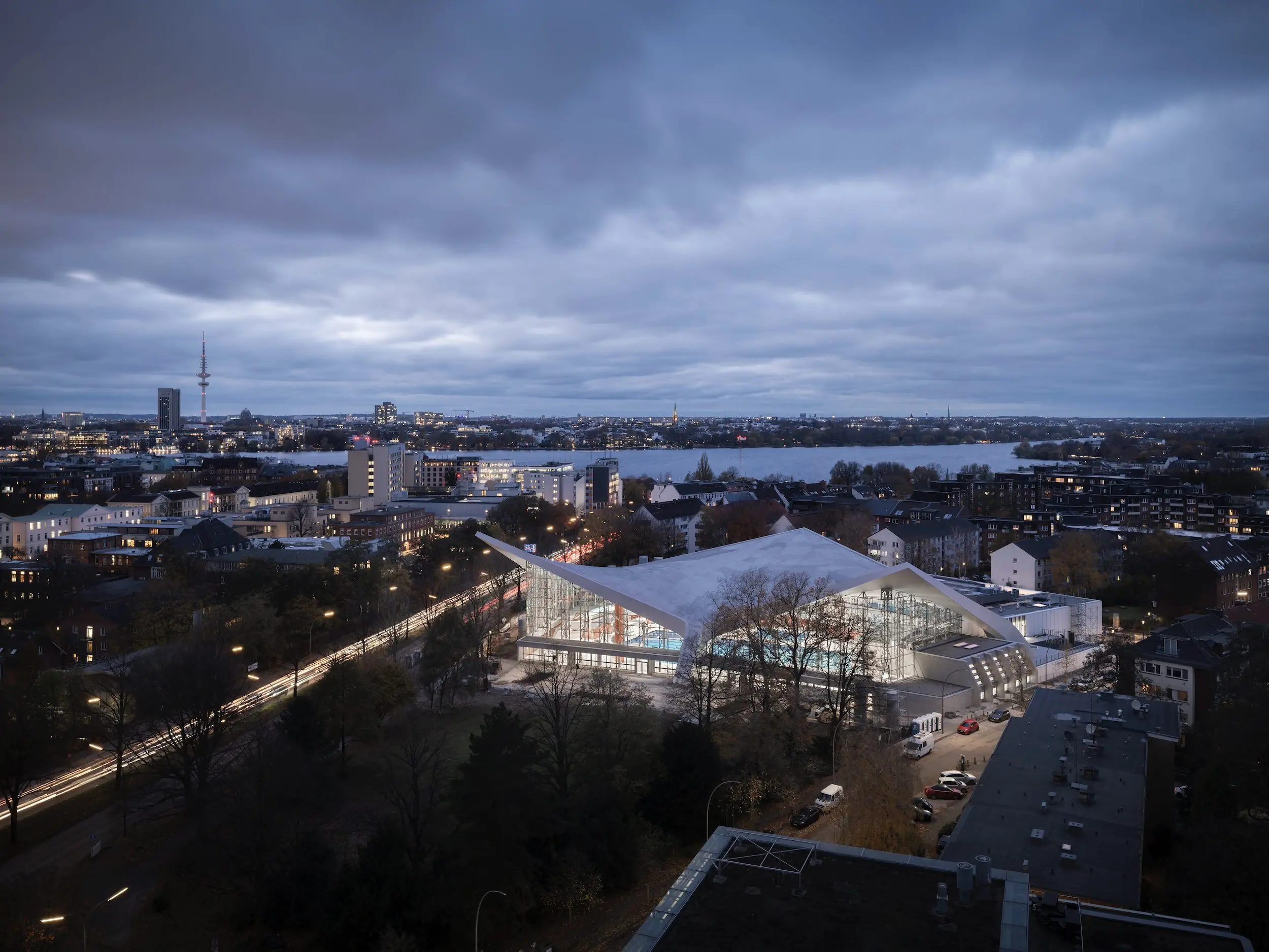
3
Historic photos showing Alsterschwimmhalle's roof structure under construction (1) and its pre-renovation interior (2); the complex pictured from above (3). Photos © Baederland Hamburg (1,2), Marcus Bredt (3)
Designed by architects Horst Niessen, Rolf Störmer, and Walter Neuhäusser, but very much enabled by the engineer Jörg Schlaich, this highly experimental, historically significant building was the first step in forming a national expertise in lightweight structures, particularly roofs, led by the late Schlaich. The firm that outlives him—Schlaich Bergermann Partner (sbp)—worked on the restoration project with architects in the head office, based in Hamburg, of von Gerkan, Marg and Partners (gmp), with whom Schlaich collaborated on a number of projects during his lifetime, including, for example, the renovation of the Berlin Olympiastadion. Completed in 2004, this stunning revamp featured a new lightweight roof, this time in steel and ETFE. Together, gmp and sbp have also radically improved the condition of the Alsterschwimmhalle: a pioneering structure confounded by its own program.
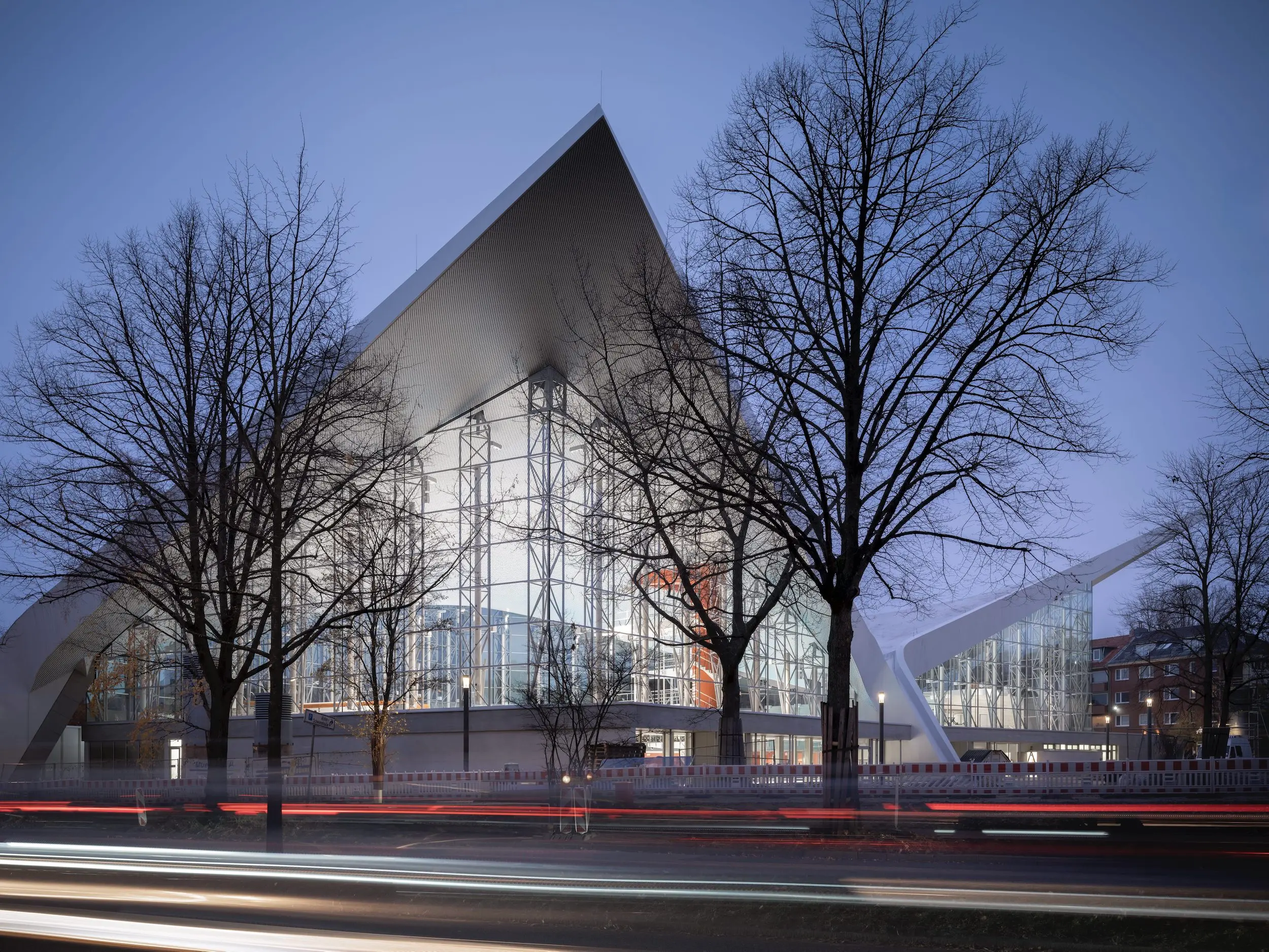
4
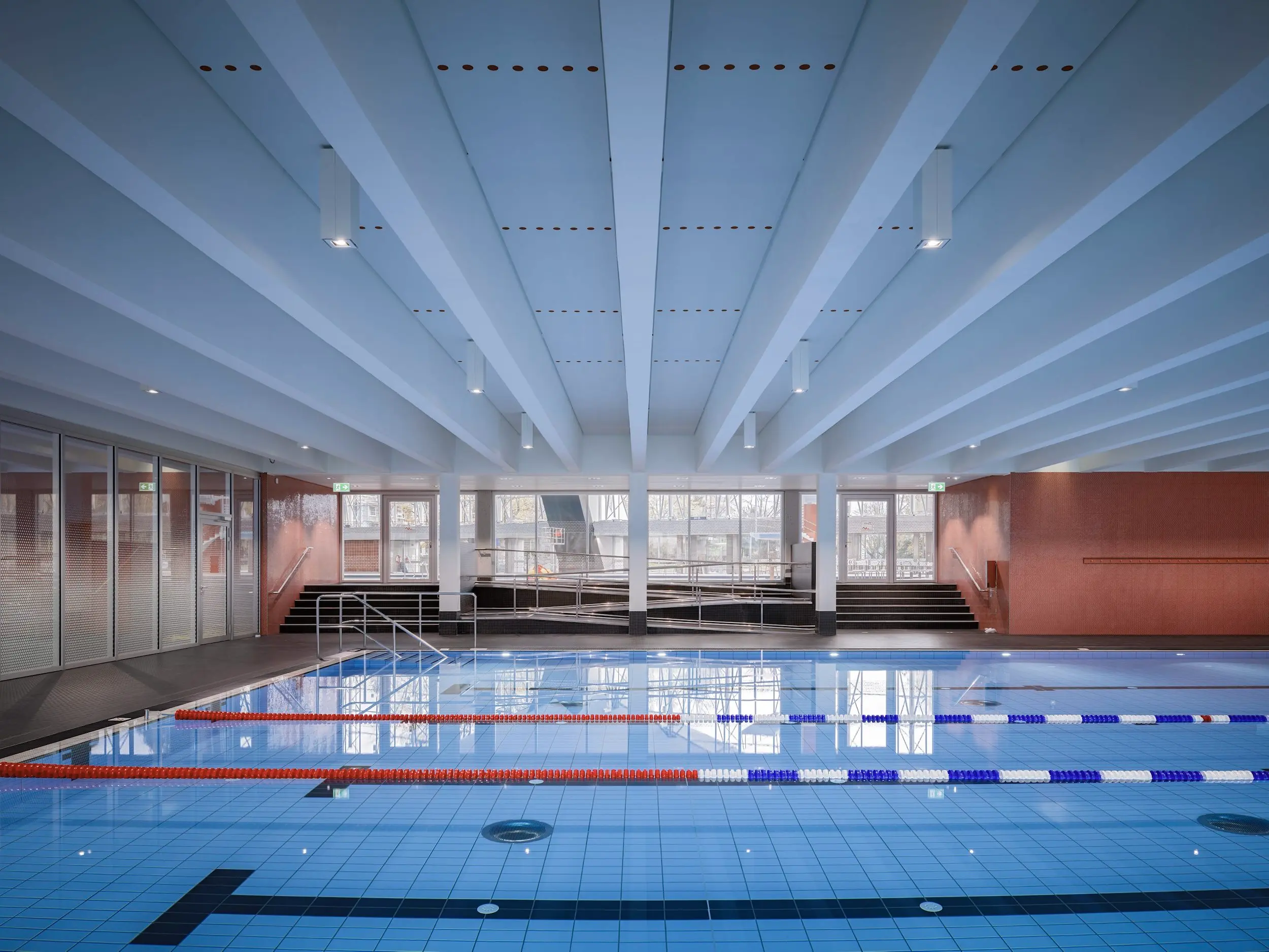
5
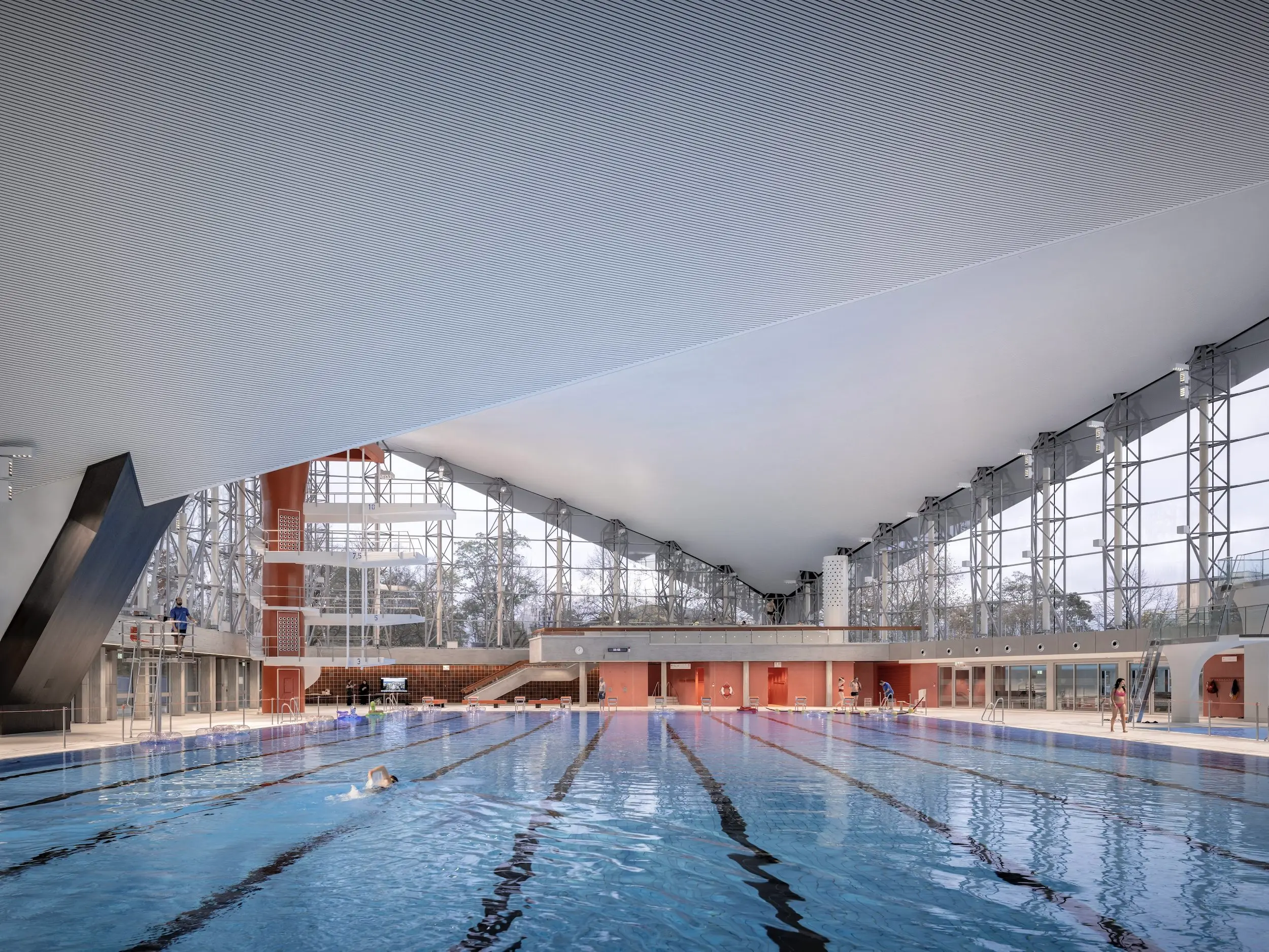
6
Exterior view of the aquatic center (4); the facility now has six swimming pools including 25-meter (5) and 50-meter lap pools (6). Photos © Marcus Bredt
Fundamentally the roof of this leisure facility creates a stunning single volume for the main 50-meter-long pool but it was never quite big enough for everything else. Previously, the secondary spaces—the ticket hall, the changing rooms, the fitness rooms and sauna—crowded the main space. Users entered the building by circuitous means: climbing stairs to the first floor, buying their ticket, and walking over the changing rooms before descending into them on the other side, creating a huge accessibility issue. In 2014 gmp was invited to submit a feasibility study to the city’s leisure company, to propose what to do with the aging structure and, once hired, convinced the Monument Protection Office in Hamburg to remove not just accretions from the 1980s, such as water slides, but the majority of the original northern section of the building, starting with the steep stairs.
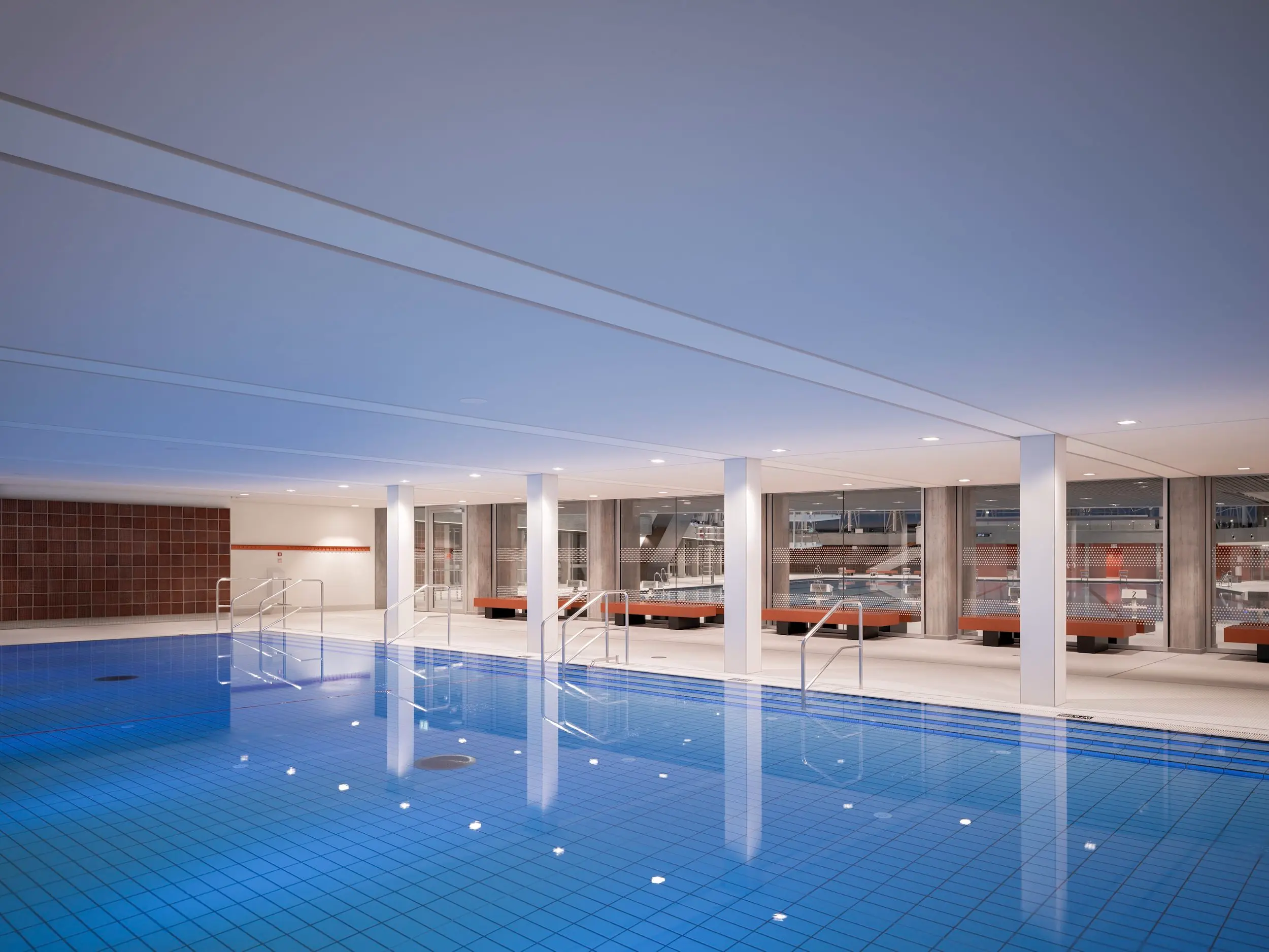
7
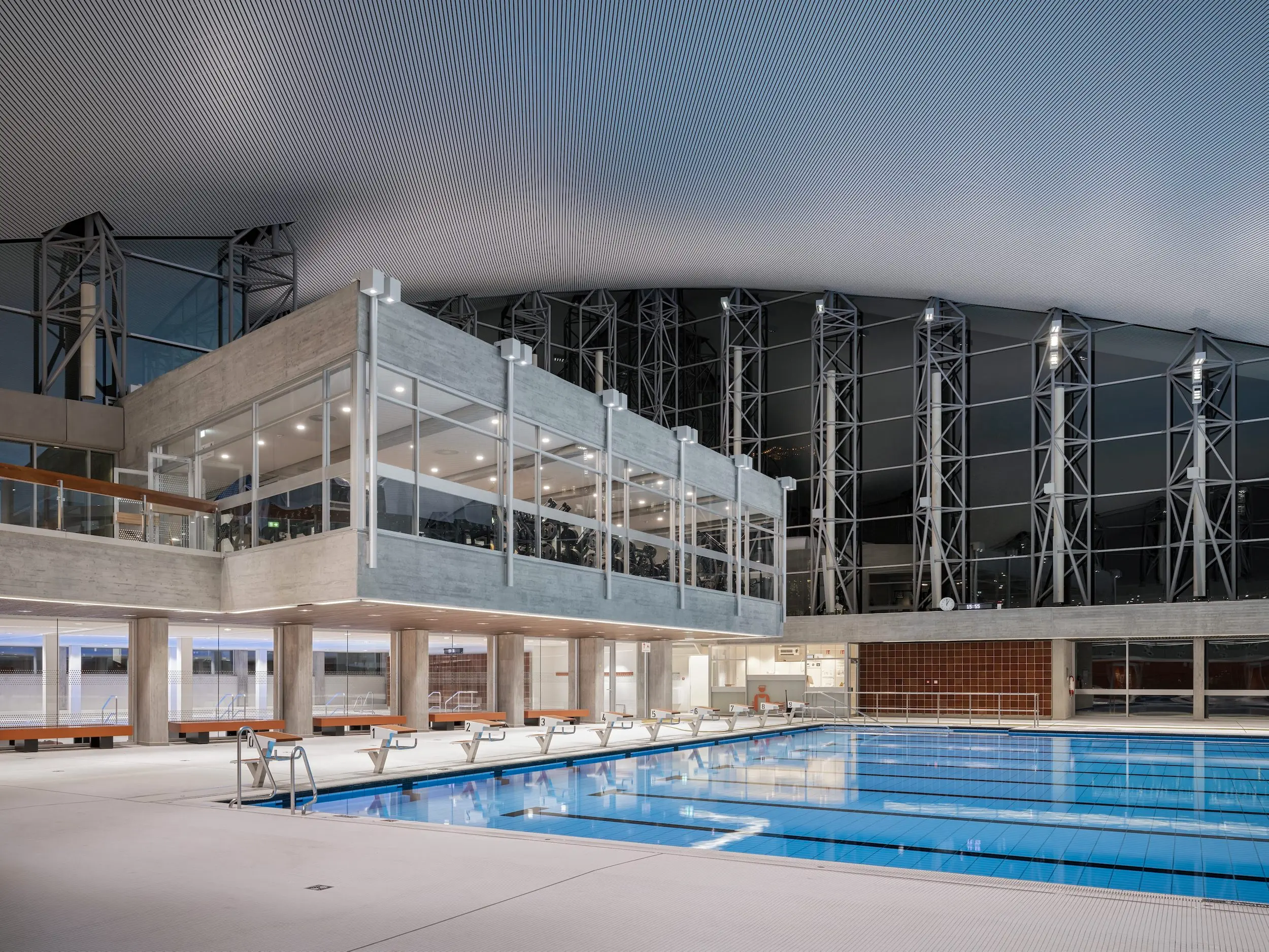
8
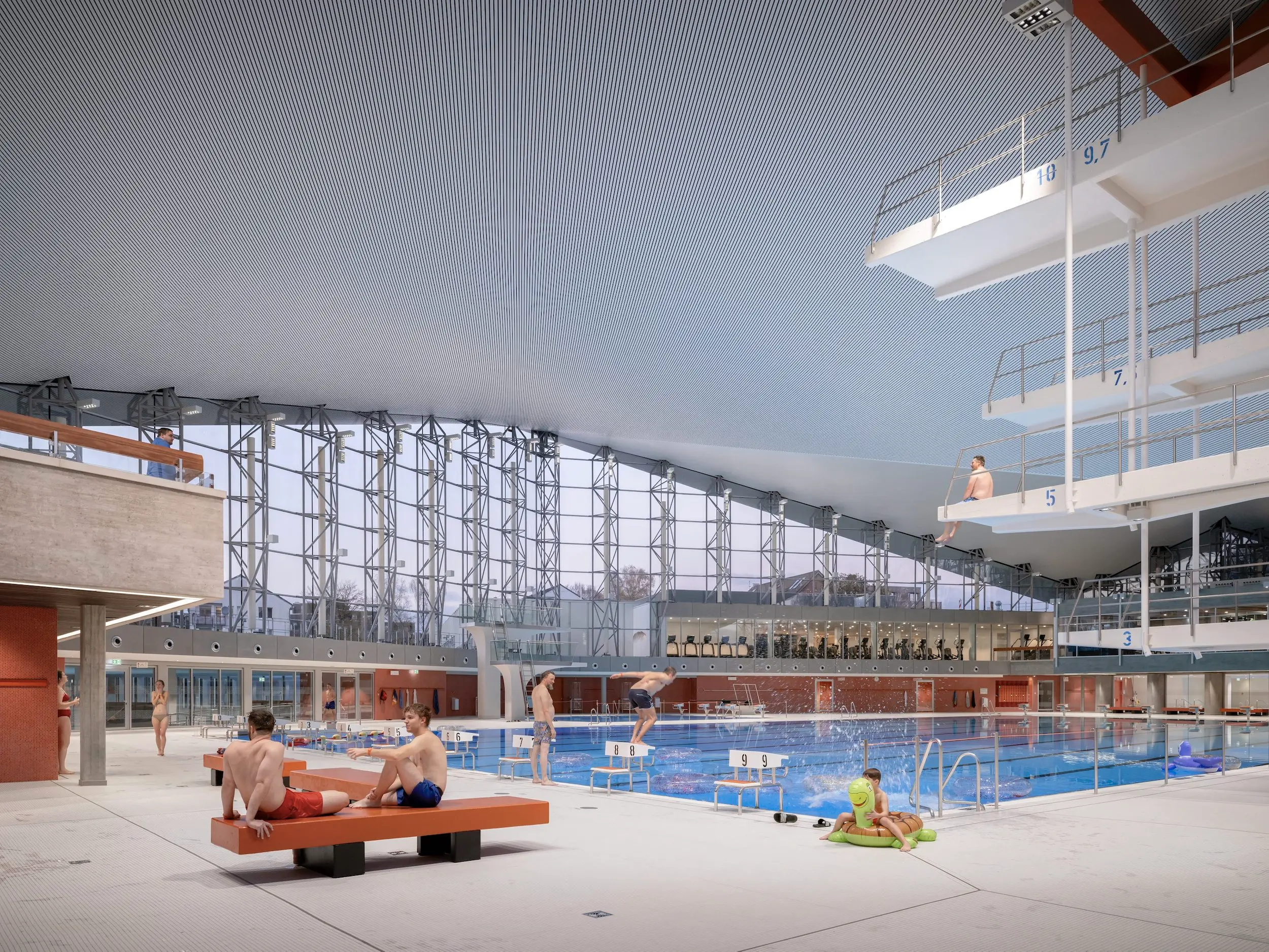
9
The renovation and expansion project increased the existing water surface area at the center by a quarter. Photos © Marcus Bredt
The replacement extension that gmp has added to the west extends well beyond the original facade line and is first legible from the car park to the west as a loggia of aluminum and glass, covering a new 25-meter-long pool and an aqua-aerobics facility. It intersects with a similarly clad two-story volume running east to west at a new entrance point at the northwest corner, which is a considerable distance—around 135 feet—from the original facade line. Gmp has made no attempt to ape the architectural language of the original building. The new linear structures make the building much more accessible, although they are incongruous with the original building in a volumetric sense.
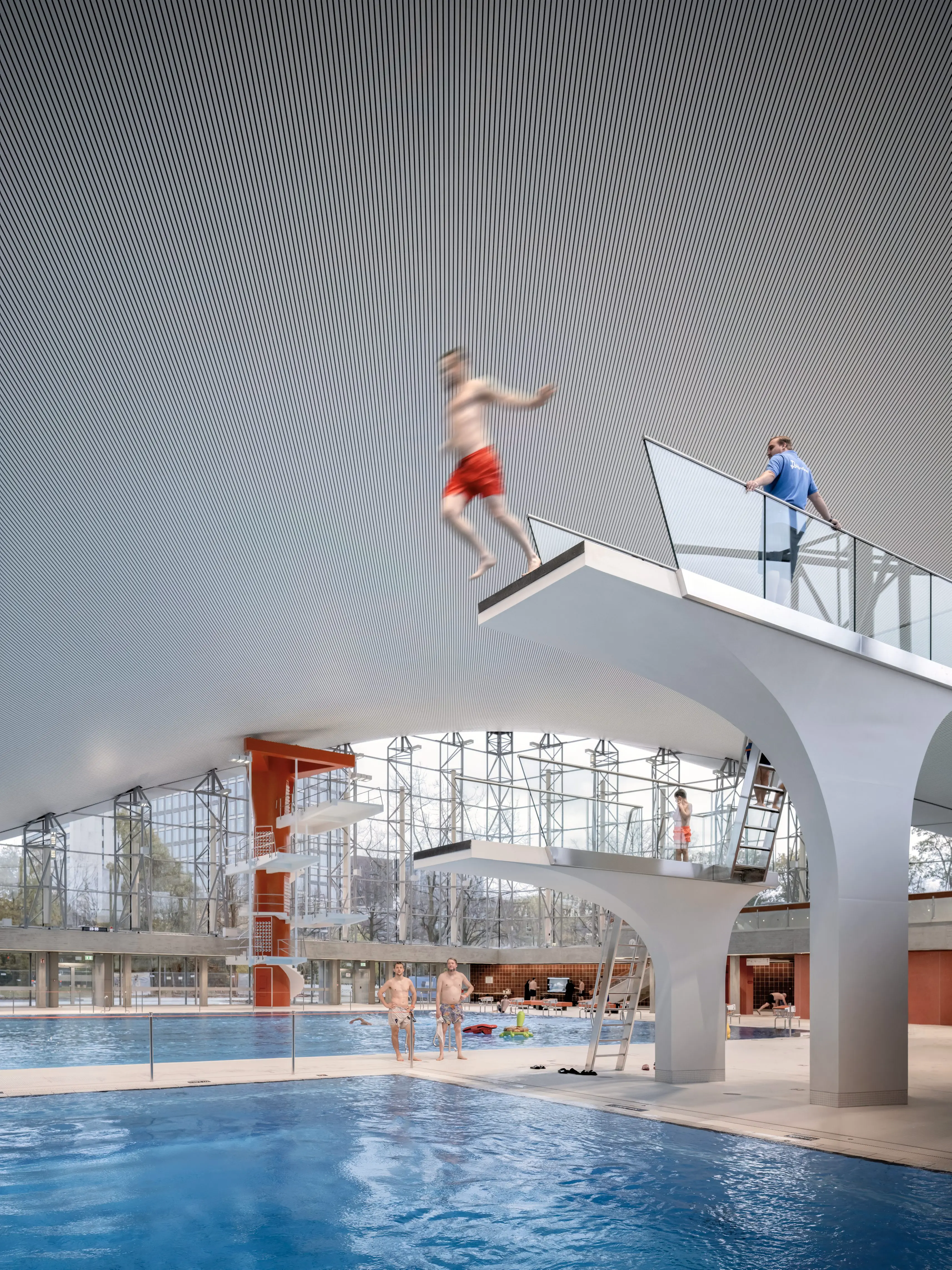
10
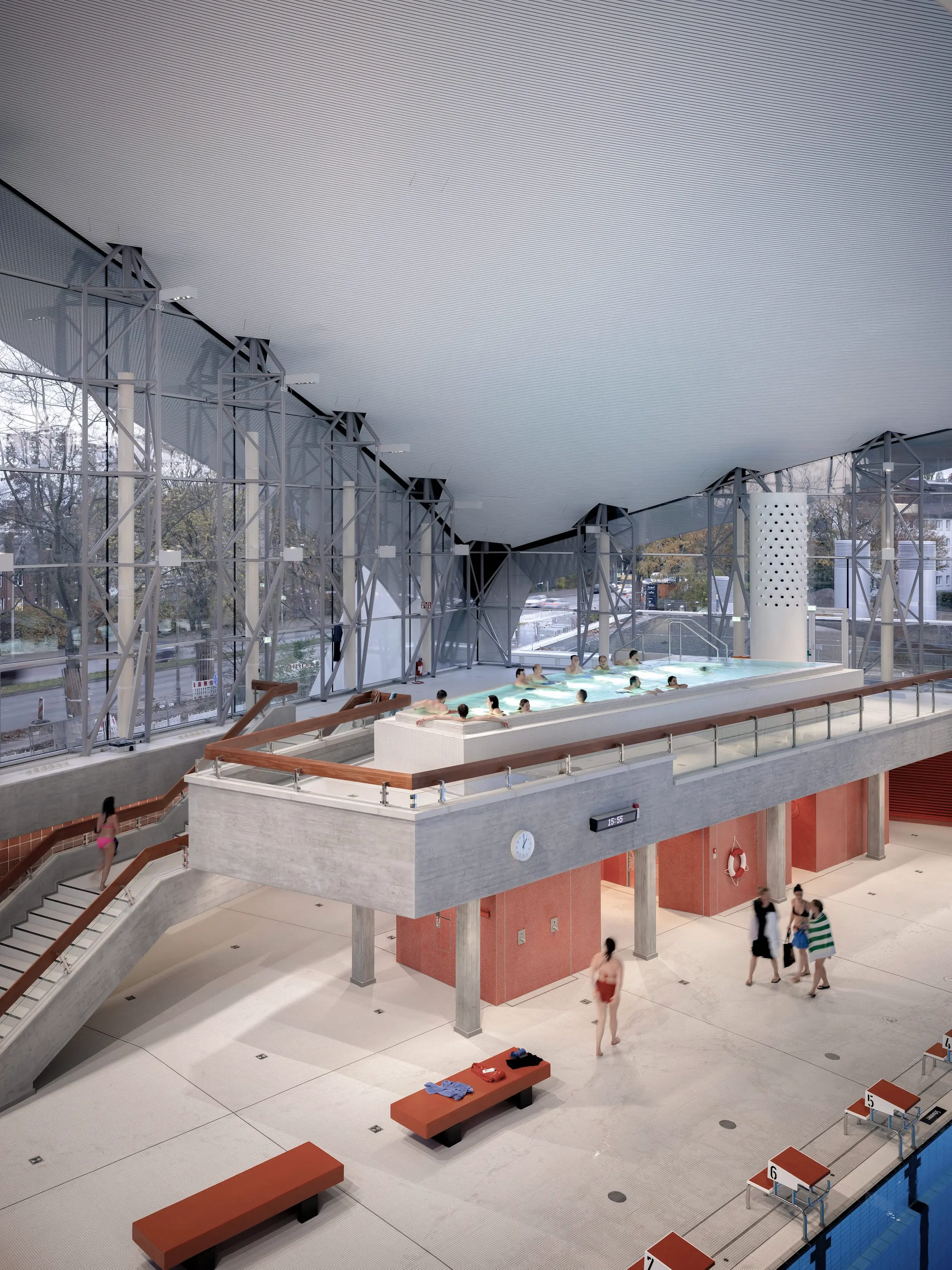
11
Dedicated diving pool with 10-meter tower (10) and a large, upper-level spa (11). Photos © Marcus Bredt
Experienced internally as a procession of spaces, an extended entrance lobby, ticket office, then a right turn into the changing rooms, the renovation is hugely successful, heightening the reveal of the immense, naturally lit, swimming pool space, made all the lighter and clearer by the removal of a rarely used stand of bleachers to the east and one of the diving platforms. (Another diving board has ingeniously been converted into a conduit for warm air from the mechanical room into the pool space.)
Could the building have remained as a single volume? Certainly, the new sauna complex on the first floor of the new building to the north seems excessive. It contains six different saunas, one of which has a capacity of 80, plus four post-sauna relaxation spaces. Although the sauna is considered a valuable sports recovery therapy, here it has had the luxury spa treatment, which does not fit readily with the city authority’s expressed wish to refocus the facility away from leisure to sports. Regardless, along with the expanded gym and original pool, the Alsterschwimmhalle is an astonishing complex dedicated to healthfulness.
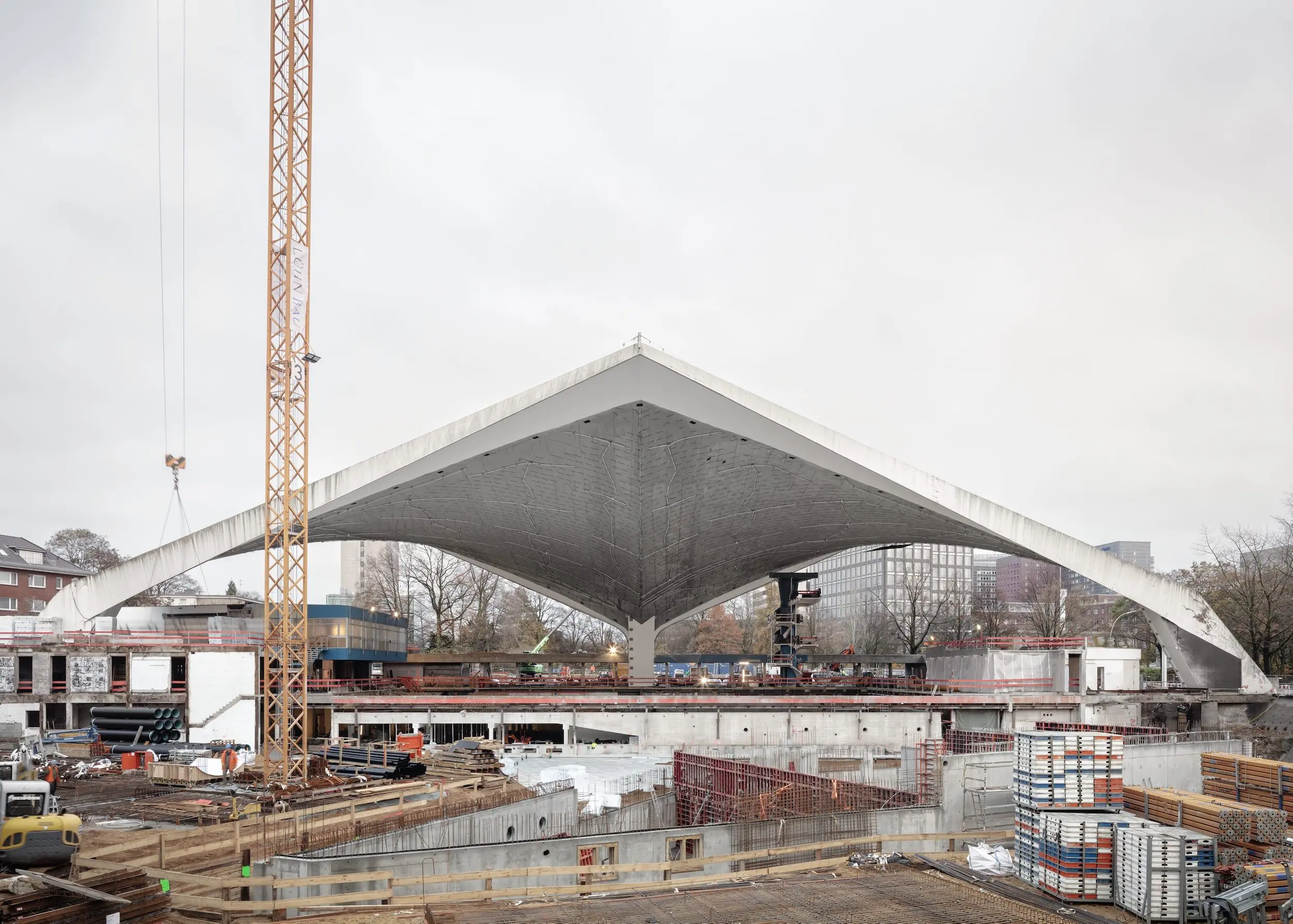
Work underway at Alsterschwimmhalle, which reopened in November of last year. Photo © Marcus Bredt
When the great German architecture critic Manfred Sack reviewed Hamburg’s Alsterschwimmhalle on its opening in 1973 he wrote that “only the roof succeeded; what's underneath doesn't quite fit in.” The building was always a trade-off and still is in its renovated guise. From the east, the Alsterschwimmhalle retains the extraordinary impact it had when it was built, its wingtips swooping to a height of 79 feet. From the west, it is a stylish public facility with a great building behind it. It is also now safe for several generations more: economically viable, with highly efficient mechanical systems, and more thermally efficient glazing. The building also has an innovative cathodic anti-corrosion system that applies a low current to protect the roof’s concrete and its steel reinforcement from chlorine and high humidity. Manfred Sack’s words still apply, but now in a more deliberate way.



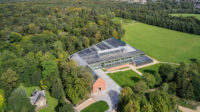
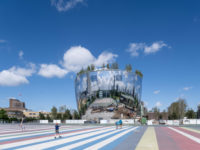
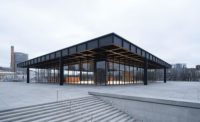
Post a comment to this article
Report Abusive Comment